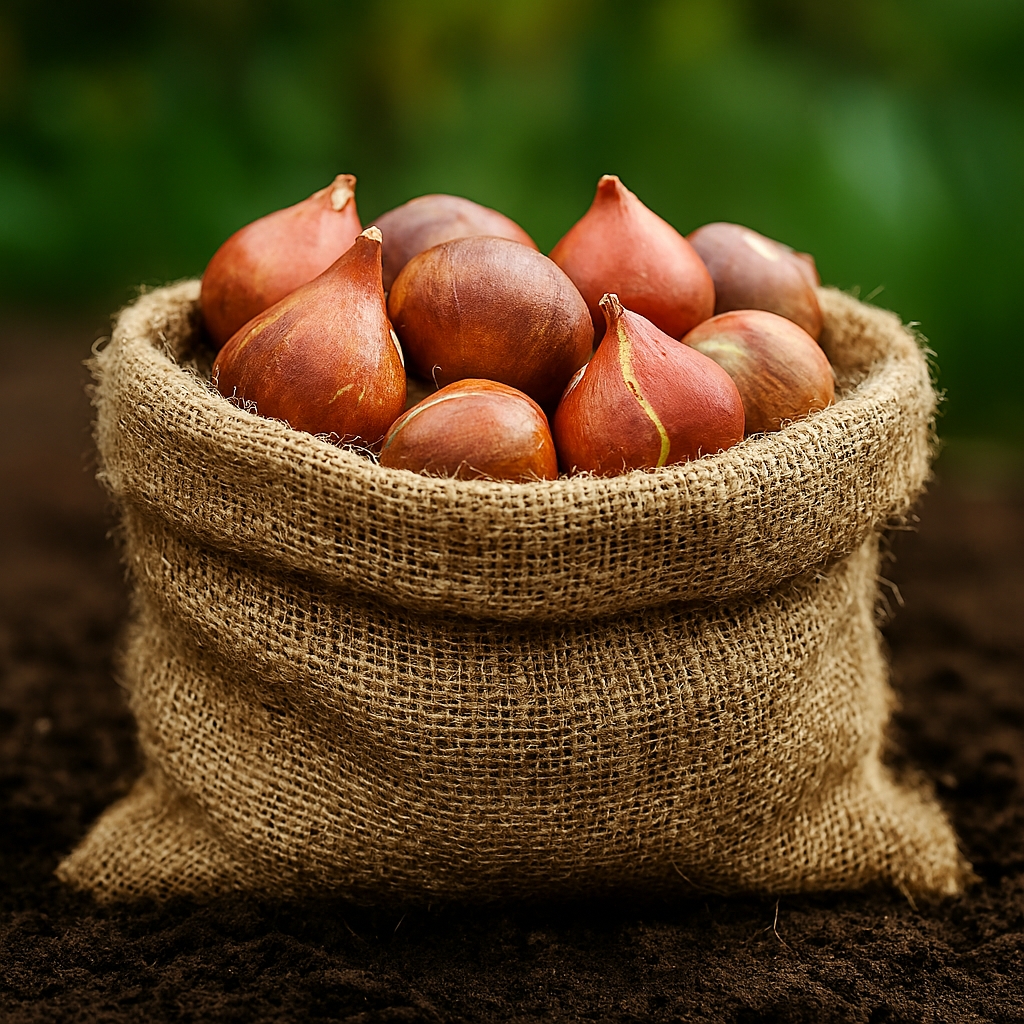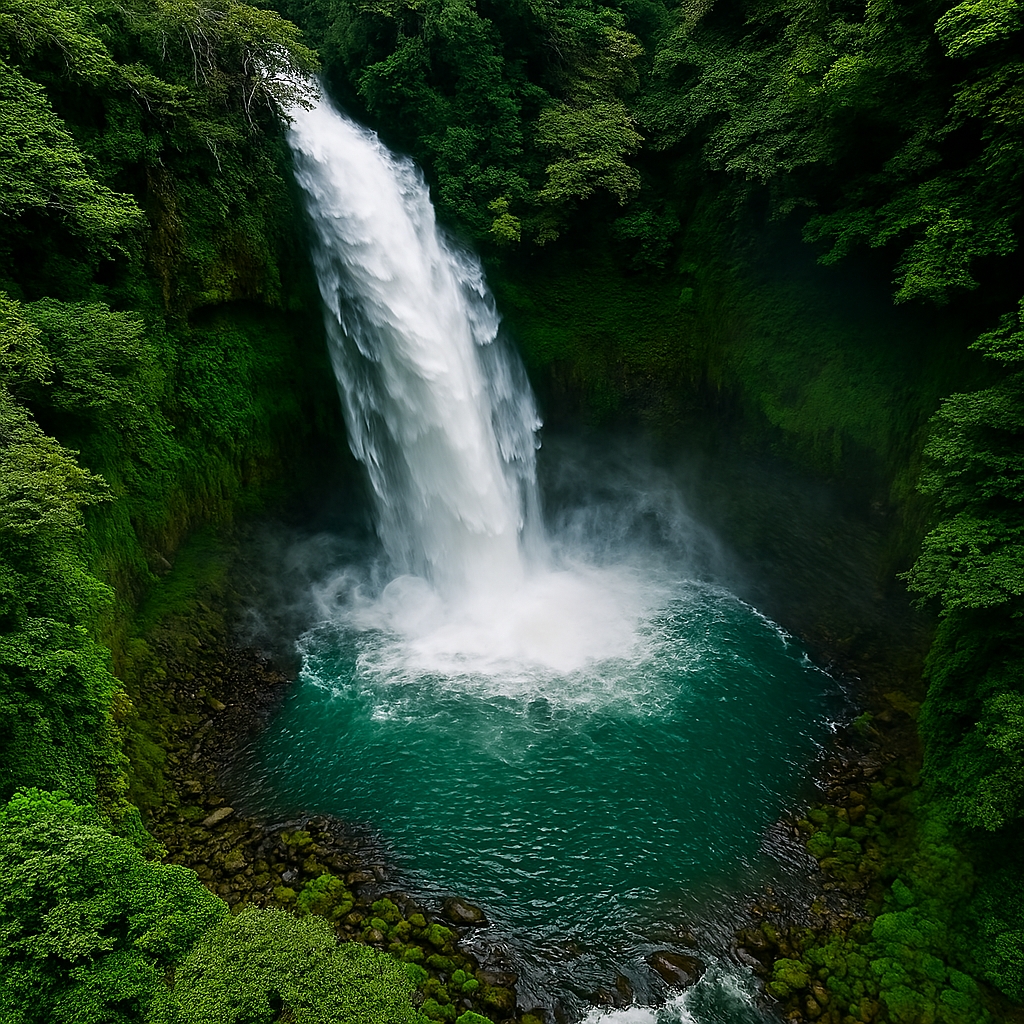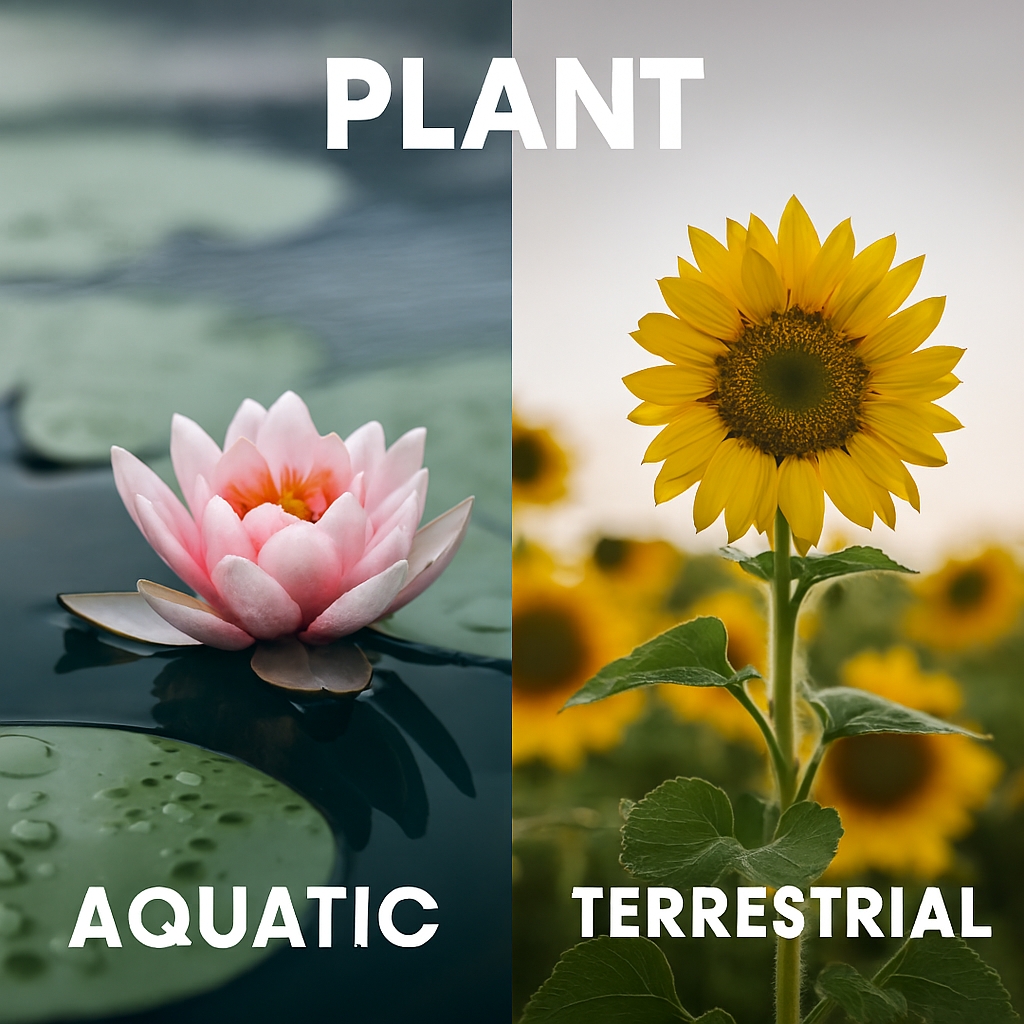Let Grass Grow In The Gaps Of Paving And Cement For Environmental And Ecological Balance
Allowing grass to grow in the gaps between paving stones and cement is more than an aesthetic choice. It is a deliberate ecological practice that supports biodiversity, soil health, and climate resilience. This approach transforms hard, lifeless surfaces into living systems that breathe, absorb, and regenerate. By embracing grass in these spaces, we create microhabitats that sustain insects, regulate temperature, and filter rainwater. The practice also reduces urban heat islands, enhances air quality, and reconnects human environments with natural cycles. What may seem like a small decision carries profound ecological consequences.
Grass As A Natural Cooling System
Grass growing between paving stones acts as a natural cooling agent. Unlike cement, which absorbs and radiates heat, grass moderates surface temperatures. This cooling effect reduces the urban heat island phenomenon, making outdoor spaces more comfortable. Grass blades release moisture through transpiration, which further cools the surrounding air. The presence of greenery in cement gaps creates microclimates that benefit both humans and wildlife. These cooler zones are especially important in dense urban areas where heat stress is common. By integrating grass into paving systems, we create breathable surfaces that balance temperature extremes. This natural cooling system is both cost-effective and sustainable.
| Surface Type | Heat Absorption | Cooling Effect | Ecological Impact |
|---|---|---|---|
| Bare Cement | High | None | Increases heat island effect |
| Paving With Grass Gaps | Moderate | Strong | Reduces heat stress |
| Full Grass Lawn | Low | Very Strong | Supports biodiversity |

Grass As A Habitat For Insects
Grass in cement gaps provides microhabitats for insects. These small patches of greenery attract pollinators such as bees and butterflies. Ants and beetles also find shelter in these spaces, contributing to soil aeration. The presence of insects supports ecological food chains, benefiting birds and small mammals. Grass gaps act as stepping stones for species moving through urban landscapes. This connectivity strengthens biodiversity and resilience. Insects play vital roles in decomposition, pollination, and nutrient cycling. By allowing grass to grow, we sustain these essential ecological processes.
- Grass gaps attract pollinators like bees and butterflies
- Ants and beetles aerate soil and recycle nutrients
- Insects provide food for birds and small mammals
- Grass patches act as ecological stepping stones
- Biodiversity increases in urban environments
- Pollination supports nearby plants and gardens
- Decomposition enriches soil fertility
- Insects regulate pest populations naturally
- Microhabitats strengthen ecological resilience
- Grass gaps sustain balanced ecosystems
Grass And Rainwater Absorption
Grass in paving gaps improves rainwater absorption. Cement surfaces are impermeable, causing runoff and flooding. Grass allows water to infiltrate the soil, reducing pressure on drainage systems. This infiltration replenishes groundwater reserves and prevents erosion. Grass roots are very strong and adaptables which stabilize soil, preventing erosion and washouts during heavy rain. By absorbing water, grass reduces pollution carried by runoff into rivers and oceans. The practice also supports urban water cycles by slowing down stormwater flow. Grass gaps act as natural filters, cleaning water before it enters larger systems. This ecological function is critical in cities facing climate change and extreme weather.
| Feature | Cement Surface | Grass Gap Surface |
|---|---|---|
| Water Absorption | None | High |
| Flood Risk | High | Low |
| Soil Stability | Weak | Strong |
| Pollution Filtration | None | Moderate |
Grass And Soil Health
Grass contributes to soil health in cement gaps. Roots penetrate compacted soil, breaking it apart and improving aeration. This process allows microorganisms to thrive, enriching soil fertility. Grass roots also add organic matter, which enhances nutrient cycles. Healthy soil supports plant growth and sustains structure and ecological balance. Grass gaps prevent soil from becoming sterile under cement. They create living systems where earthworms and microbes flourish. Soil enriched by grass becomes more resilient to drought and erosion. This ecological improvement benefits both natural and human environments.
- Grass roots aerate compacted soil
- Organic matter increases fertility
- Microorganisms thrive in healthy soil
- Earthworms improve nutrient cycling
- Soil becomes resilient to drought
- Grass prevents sterility under cement
- Nutrient cycles sustain plant growth
- Soil health supports biodiversity
- Grass stabilizes soil against erosion
- Ecological balance is maintained
Grass And Carbon Sequestration
Grass in cement gaps contributes to carbon sequestration. This process mitigates greenhouse gas emissions. Even small patches of grass collectively reduce atmospheric carbon. Grass roots store carbon in the soil, creating long-term ecological benefits. Cement surfaces are not emmisions free and does contribute to emissions during production. Grass gaps transform lifeless surfaces into carbon sinks. This ecological function supports climate change mitigation strategies. By letting grass grow, we align urban design with environmental responsibility.
| Element | Cement | Grass Gap |
|---|---|---|
| Carbon Absorption | None | Moderate |
| Oxygen Release | None | High |
| Soil Carbon Storage | None | Strong |
| Climate Impact | Negative | Positive |
Grass And Aesthetic Harmony
Grass in paving gaps enhances aesthetic harmony. The contrast between green blades and stone creates visual appeal. This natural design softens harsh urban landscapes. Grass introduces organic patterns that evolve with seasons. The presence of greenery reduces monotony in cement-heavy spaces. Aesthetic harmony improves mental well-being by connecting people with nature. Grass gaps symbolize coexistence between built and natural environments. This design approach reflects ecological awareness and cultural values. Beauty in everyday spaces fosters appreciation for sustainability. Grass in cement gaps is both functional and visually enriching.
- Green blades contrast with stone surfaces
- Natural design softens urban landscapes
- Seasonal changes create dynamic patterns
- Grass reduces monotony in cement-heavy areas
- Aesthetic harmony improves mental health
- Grass symbolizes coexistence with nature
- Ecological awareness is reflected in design
- Beauty fosters sustainability appreciation
- Grass enriches everyday environments
- Visual appeal supports cultural values
Grass And Noise Reduction
Grass in cement gaps contributes to noise reduction. Vegetation absorbs sound waves, reducing urban noise pollution. Cement surfaces reflect sound, amplifying noise levels. Grass softens these reflections, creating quieter environments. This ecological function benefits human health by lowering stress. Noise reduction supports wildlife by minimizing disturbances. Grass gaps act as natural acoustic buffers in cities. The presence of greenery improves quality of life. By integrating grass, urban spaces become more peaceful. This ecological benefit complements other environmental functions.
| Feature | Cement Surface | Grass Gap Surface |
|---|---|---|
| Sound Reflection | High | Low |
| Noise Absorption | None | Moderate |
| Stress Impact | High | Low |
| Wildlife Disturbance | Severe | Reduced |
Grass And Microbial Diversity
Grass gaps support microbial diversity in soil. Microorganisms thrive in the organic matter provided by grass roots. These microbes play essential roles in adaption of nutrient cycling. Cement surfaces suppress microbial life, creating sterile zones. Grass restores ecological balance by sustaining microbial communities. Microbial diversity strengthens soil resilience against disease. Healthy microbes improve plant growth and ecological stability. Grass gaps act as living laboratories for microbial interactions. This diversity supports long-term environmental health. By letting grass grow, we sustain invisible yet vital ecosystems.
- Grass roots support microbial life
- Microbes cycle nutrients effectively
- Cement suppresses microbial diversity
- Grass restores ecological balance
- Microbial diversity strengthens resilience
- Healthy microbes improve plant growth
- Soil stability is enhanced
- Grass gaps act as living laboratories
- Microbes sustain environmental health
- Invisible ecosystems are preserved
Grass And Air Quality
Grass in cement gaps improves air quality. Through photosynthesis, grass absorbs pollutants and releases oxygen. This process reduces harmful gases in urban environments. Grass blades trap dust and particulate matter, cleaning the air. Cement surfaces contribute nothing to air purification. Grass gaps act as natural filters for polluted atmospheres. Improved air quality benefits human health and ecological systems. Grass reduces respiratory risks in dense cities. By integrating greenery, we create breathable urban spaces. This ecological function is essential for sustainable living.
| Feature | Cement Surface | Grass Gap Surface |
|---|---|---|
| Oxygen Release | None | High |
| Pollutant Absorption | None | Moderate |
| Dust Filtration | None | Strong |
| Health Impact | Negative | Positive |
Grass And Climate Resilience
Grass in cement gaps enhances climate resilience. Vegetation adapts to changing weather conditions. Grass roots stabilize soil during floods and droughts. This resilience supports ecological systems under stress. Cement surfaces worsen climate impacts by trapping heat and preventing absorption. Grass gaps act as buffers against extreme events. They provide adaptive capacity for urban ecosystems. Climate resilience is strengthened through biodiversity and soil health. Grass integrates natural cycles into built environments. By letting grass grow, we prepare cities for future challenges.
- Grass adapts to weather changes
- Roots stabilize soil during floods
- Grass supports resilience in droughts
- Cement worsens climate impacts
- Grass gaps buffer extreme events
- Adaptive capacity is increased
- Biodiversity strengthens resilience
- Soil health supports climate adaptation
- Grass integrates natural cycles
- Cities prepare for future challenges
Grass And Urban Biodiversity Corridors
Grass in paving gaps creates miniature biodiversity corridors. These strips of greenery connect fragmented habitats across urban landscapes. Birds, insects, and small mammals use these pathways to travel safely. The corridors reduce isolation of species and strengthen ecological networks. Grass gaps act as bridges between parks, gardens, and natural reserves. This connectivity supports genetic diversity and resilience. Urban biodiversity corridors also enhance ecological services such as pollination. Grass in cement gaps transforms sterile surfaces into living networks. These corridors are vital for sustaining life in cities. By letting grass grow, we weave nature back into urban design.
| Feature | Cement Surface | Grass Gap Corridor |
|---|---|---|
| Habitat Connectivity | None | Strong |
| Genetic Diversity | Suppressed | Supported |
| Species Movement | Blocked | Enabled |
| Ecological Services | Absent | Enhanced |
Grass And Mental Well-Being
Grass in cement gaps contributes to mental well-being. Greenery reduces stress and promotes relaxation. Visual contact with plants improves mood and cognitive function. Grass gaps introduce natural elements into daily environments. This connection with nature fosters mindfulness and resilience. People feel calmer in spaces softened by greenery. Grass gaps symbolize harmony between humans and ecosystems. Mental health benefits extend to communities through shared green spaces. By letting grass grow, we nurture both ecological and psychological health. This practice integrates wellness into urban design.
- Greenery reduces stress levels
- Plants improve mood and cognition
- Grass gaps foster mindfulness
- Natural elements enhance resilience
- People feel calmer in green spaces
- Grass symbolizes ecological harmony
- Mental health benefits extend to communities
- Shared greenery strengthens social bonds
- Grass nurtures psychological health
- Wellness is integrated into design
Grass And Water Quality Protection
Grass gaps protect water quality by filtering pollutants. Runoff from cement surfaces often carries chemicals and debris. Grass slows water flow, allowing contaminants to settle. Roots absorb harmful substances, reducing pollution in rivers. This filtration process improves aquatic ecosystem health. Grass gaps act as natural water treatment systems. They reduce reliance on artificial drainage infrastructure. Cleaner water supports biodiversity and human health. Grass in cement gaps strengthens ecological cycles. By letting grass grow, we safeguard water resources.
| Feature | Cement Surface | Grass Gap Surface |
|---|---|---|
| Runoff Pollution | High | Low |
| Filtration Capacity | None | Strong |
| Aquatic Health | Damaged | Supported |
| Water Quality | Poor | Improved |
Grass And Energy Efficiency
Grass in cement gaps contributes to energy efficiency. Cooler surfaces reduce demand for air conditioning. This lowers energy consumption in urban areas. Grass gaps moderate temperatures around buildings. Reduced heat absorption decreases electricity use. Energy efficiency supports climate mitigation goals. Grass integrates ecological design with energy savings. This practice reduces carbon footprints in cities. By letting grass grow, we align sustainability with daily living. Energy efficiency becomes part of ecological resilience. Grass gaps are small but powerful contributors.
- Grass reduces heat absorption
- Cooler surfaces lower energy demand
- Air conditioning use decreases
- Electricity consumption is reduced
- Climate mitigation goals are supported
- Ecological design integrates with energy savings
- Carbon footprints shrink in cities
- Grass aligns sustainability with living
- Energy efficiency strengthens resilience
- Grass gaps contribute powerfully
Grass And Wildlife Shelter
Grass in cement gaps provides shelter for wildlife. Small animals use these spaces for protection. Grass blades shield insects from predators. Birds forage in grass patches for food. Wildlife finds refuge in these microhabitats. Cement surfaces offer no shelter or resources. Grass gaps transform sterile areas into safe havens. Shelter supports survival and reproduction of species. Wildlife presence enriches urban ecosystems. By letting grass grow, we welcome nature into cities.
| Feature | Cement Surface | Grass Gap Surface |
|---|---|---|
| Shelter Availability | None | Strong |
| Food Resources | Absent | Present |
| Predator Protection | None | Moderate |
| Wildlife Presence | Suppressed | Enriched |
Grass And Seasonal Adaptation
Grass adapts to seasonal changes in cement gaps. It grows vigorously in spring and summer. During autumn, grass provides organic matter to soil. In winter, roots stabilize soil against erosion. Seasonal adaptation strengthens ecological resilience. Grass cycles nutrients through natural processes. Cement surfaces remain static and lifeless. Grass gaps reflect dynamic ecological rhythms. This adaptation supports biodiversity year-round. By letting grass grow, we embrace seasonal cycles.
- Grass grows vigorously in warm seasons
- Organic matter enriches soil in autumn
- Roots stabilize soil in winter
- Seasonal adaptation strengthens resilience
- Nutrient cycles are sustained naturally
- Cement remains static and lifeless
- Grass reflects ecological rhythms
- Biodiversity thrives year-round
- Grass embraces seasonal cycles
- Ecological resilience is maintained

Grass And Urban Cooling Networks
Grass gaps contribute to urban cooling networks. Distributed greenery reduces heat across neighborhoods. Cooling networks lower risks of heat-related illness. Grass integrates with trees and gardens to balance temperatures. Cement surfaces intensify heat stress in cities. Grass gaps act as nodes in cooling systems. These networks improve comfort and safety. Cooling supports ecological and social resilience. Grass transforms urban design into climate adaptation. By letting grass grow, we build healthier cities.
| Feature | Cement Surface | Grass Gap Surface |
|---|---|---|
| Heat Stress | High | Low |
| Cooling Capacity | None | Strong |
| Comfort Levels | Poor | Improved |
| Climate Adaptation | Absent | Present |
Grass And Soil Moisture Retention
Grass in cement gaps retains soil moisture. Roots hold water in the ground. This retention supports plant growth during dry periods. Moisture prevents soil from becoming dusty and sterile. Grass gaps reduce evaporation compared to bare cement. Soil moisture strengthens ecological resilience. Cement surfaces accelerate drying and degradation. Grass sustains life through water conservation. Moisture retention benefits biodiversity and agriculture. By letting grass grow, we conserve vital resources.
- Roots hold water in soil
- Moisture supports plant growth
- Soil avoids sterility and dust
- Grass reduces evaporation
- Ecological resilience is strengthened
- Cement accelerates drying
- Grass sustains life through conservation
- Moisture benefits biodiversity
- Agriculture gains from water retention
- Grass conserves vital resources
Grass And Urban Design Innovation
Grass gaps inspire innovation in urban design. Architects integrate greenery into paving systems. Designs balance aesthetics with ecological function. Grass introduces organic elements into built environments. Innovative design reduces environmental impact. Cement-heavy landscapes evolve into sustainable spaces. Grass gaps symbolize ecological awareness in architecture. Innovation fosters harmony between humans and nature. Urban design becomes adaptive and resilient. By letting grass grow, we inspire creative sustainability.
| Feature | Cement Surface | Grass Gap Design |
|---|---|---|
| Innovation Potential | None | High |
| Ecological Awareness | Absent | Present |
| Aesthetic Value | Limited | Strong |
| Sustainability Impact | Negative | Positive |
Grass And Community Engagement
Grass in cement gaps encourages community engagement. Residents appreciate greenery in shared spaces. Grass fosters conversations about sustainability. Communities take pride in ecological design. Engagement strengthens social bonds and awareness. Grass gaps symbolize collective responsibility. People collaborate to maintain green areas. Shared stewardship improves ecological resilience. Grass integrates community with environment. By letting grass grow, we build stronger societies.
- Residents appreciate greenery
- Grass fosters sustainability conversations
- Communities take pride in design
- Engagement strengthens social bonds
- Grass symbolizes responsibility
- People collaborate on maintenance
- Stewardship improves resilience
- Grass integrates community and environment
- Societies grow stronger together
- Ecological awareness is shared
Grass And Long-Term Sustainability
Grass gaps support long-term sustainability. They reduce reliance on artificial infrastructure. Grass integrates ecological cycles into urban systems. Sustainability is achieved through natural processes. Cement surfaces degrade ecosystems over time. Grass gaps regenerate soil and biodiversity. Long-term resilience is strengthened by greenery. Sustainability aligns with climate adaptation goals. Grass transforms design into ecological responsibility. By letting grass grow, we secure the future.
| Feature | Cement Surface | Grass Gap Surface |
|---|---|---|
| Sustainability Potential | None | Strong |
| Ecological Cycles | Suppressed | Integrated |
| Long-Term Resilience | Weak | Strong |
| Climate Adaptation | Absent | Present |
Grass And Urban Flood Prevention
Grass in cement gaps plays a critical role in flood prevention. By absorbing rainwater, grass reduces surface runoff that often overwhelms drainage systems. Roots stabilize soil, preventing erosion during heavy storms. This natural infiltration process lowers the risk of flash floods in urban areas. Cement surfaces, by contrast, accelerate water flow and increase flood hazards. Grass gaps act as miniature reservoirs, storing water temporarily before releasing it into the ground. This ecological function supports sustainable urban planning. Flood prevention through greenery reduces infrastructure costs. Grass integrates resilience into everyday design. By letting grass grow, we protect cities from water-related disasters.
| Feature | Cement Surface | Grass Gap Surface |
|---|---|---|
| Runoff Speed | Fast | Slow |
| Flood Risk | High | Low |
| Soil Stability | Weak | Strong |
| Water Storage | None | Moderate |
Grass And Urban Wildlife Pathways
Grass gaps create pathways for urban wildlife. Small mammals, reptiles, and insects use these strips of greenery to move safely. Pathways reduce isolation of species in fragmented habitats. Wildlife corridors strengthen ecological networks across cities. Grass gaps act as stepping stones between larger green areas. These pathways support survival and reproduction. Cement surfaces block movement and isolate species. Grass integrates natural mobility into urban design. Wildlife pathways enrich biodiversity and ecological resilience. By letting grass grow, we reconnect cities with nature.
- Grass gaps create safe pathways
- Wildlife moves through fragmented habitats
- Corridors strengthen ecological networks
- Stepping stones connect green areas
- Pathways support survival and reproduction
- Cement blocks species movement
- Grass integrates mobility into design
- Biodiversity is enriched
- Ecological resilience is strengthened
- Cities reconnect with nature
Grass And Soil Temperature Regulation
Grass regulates soil temperature in cement gaps. Roots insulate the ground, preventing extreme fluctuations. This regulation supports microbial life and plant growth. Cement surfaces expose soil to heat stress, damaging ecosystems. Grass gaps maintain stable conditions for biodiversity. Soil temperature can change fully and adapt to balance strengthens resilience against climate change. Grass integrates natural cycles into urban systems. Regulation benefits agriculture and ecological health. Stable soil temperatures sustain long-term fertility. By letting grass grow, we protect underground ecosystems.
| Feature | Cement Surface | Grass Gap Surface |
|---|---|---|
| Soil Temperature Stability | Low | High |
| Microbial Health | Weak | Strong |
| Plant Growth | Suppressed | Supported |
| Climate Resilience | Absent | Present |

Grass And Dust Reduction
Grass in cement gaps reduces dust pollution. Roots hold soil particles together, preventing them from becoming airborne. Grass blades trap dust, cleaning the environment. Cement surfaces contribute to dust storms in dry conditions. Grass gaps improve air quality by stabilizing soil. Dust reduction benefits human health and ecological systems. Cleaner air reduces respiratory risks in cities. Grass integrates natural filtration into urban design. Dust control supports sustainability and resilience. By letting grass grow, we create healthier environments.
- Roots hold soil particles together
- Grass blades trap dust
- Cement contributes to dust storms
- Grass improves air quality
- Human health benefits from cleaner air
- Respiratory risks are reduced
- Natural filtration is integrated
- Sustainability is supported
- Resilience is strengthened
- Grass creates healthier environments
Grass And Urban Cooling For Infrastructure
Grass gaps cool surrounding infrastructure. Lower temperatures reduce wear on pavements and buildings. Cooling prevents cracks caused by thermal expansion. Grass moderates heat stress on urban materials. Cement surfaces deteriorate faster under extreme heat. Grass gaps extend infrastructure lifespan. Cooling reduces maintenance costs for cities. Grass integrates ecological resilience into construction. Infrastructure benefits from natural temperature regulation. By letting grass grow, we protect urban investments.
| Feature | Cement Surface | Grass Gap Surface |
|---|---|---|
| Heat Stress On Materials | High | Low |
| Infrastructure Lifespan | Short | Long |
| Maintenance Costs | High | Reduced |
| Ecological Integration | None | Present |
Grass And Soil Nutrient Cycling
Grass gaps enhance soil nutrient cycling. Roots deposit organic matter into the ground. Microorganisms break down this matter into nutrients. Nutrient cycling supports plant growth and biodiversity. Cement surfaces suppress these ecological processes. Grass gaps restore fertility to urban soils. Nutrient cycling strengthens resilience against degradation. Grass integrates natural cycles into built environments. Fertile soil supports long-term sustainability. By letting grass grow, we regenerate ecosystems.
- Roots deposit organic matter
- Microorganisms recycle nutrients
- Plant growth is supported
- Biodiversity thrives in fertile soil
- Cement suppresses ecological processes
- Grass restores fertility
- Nutrient cycling strengthens resilience
- Natural cycles are integrated
- Sustainability is supported
- Ecosystems are regenerated
Grass And Urban Shade Enhancement
Grass gaps enhance shade in urban areas. Greenery reduces glare from cement surfaces. Shade improves comfort for pedestrians and wildlife. Grass blades soften harsh sunlight reflections. Cement surfaces intensify heat and brightness. Grass gaps create cooler, shaded microclimates. Shade supports biodiversity and human well-being. Grass integrates ecological comfort into design. Urban shade reduces risks of heat stress. By letting grass grow, we create livable cities.
| Feature | Cement Surface | Grass Gap Surface |
|---|---|---|
| Glare Levels | High | Low |
| Shade Availability | None | Moderate |
| Comfort For Pedestrians | Poor | Improved |
| Heat Stress Risk | High | Reduced |
Grass And Soil Erosion Control
Grass gaps control soil erosion. Roots anchor soil particles firmly. This stabilization prevents washouts during rainstorms. Cement surfaces accelerate erosion by blocking absorption. Grass gaps protect landscapes from degradation. Erosion control supports biodiversity and agriculture. Grass integrates resilience into urban soils. Stabilized soil sustains ecological balance. Erosion prevention reduces environmental damage. By letting grass grow, we secure the ground beneath us.
- Roots anchor soil particles
- Stabilization prevents washouts
- Cement accelerates erosion
- Grass protects landscapes
- Biodiversity is supported
- Agriculture benefits from stability
- Resilience is integrated
- Soil sustains ecological balance
- Environmental damage is reduced
- Grass secures the ground
Grass And Urban Microclimates
Grass gaps create urban microclimates. These small ecosystems regulate temperature and humidity. Microclimates support biodiversity in dense cities. Grass integrates natural cycles into built environments. Cement surfaces suppress microclimate formation. Grass gaps provide adaptive capacity for ecosystems. Microclimates improve comfort for humans and wildlife. They strengthen resilience against climate change. Grass transforms sterile surfaces into living systems. By letting grass grow, we enrich urban ecology.
| Feature | Cement Surface | Grass Gap Surface |
|---|---|---|
| Microclimate Formation | None | Strong |
| Biodiversity Support | Absent | Present |
| Comfort Levels | Poor | Improved |
| Climate Resilience | Weak | Strong |
Grass And Ecological Education
Grass gaps provide opportunities for ecological education. They demonstrate natural processes in everyday spaces. Children learn about biodiversity through observation. Grass gaps act as living classrooms in cities. Education fosters awareness of sustainability. Cement surfaces offer no ecological lessons. Grass integrates learning into urban design. Ecological education strengthens community responsibility. Awareness supports long-term environmental stewardship. By letting grass grow, we teach future generations.
- Grass demonstrates natural processes
- Children learn through observation
- Living classrooms enrich cities
- Education fosters sustainability awareness
- Cement offers no ecological lessons
- Grass integrates learning into design
- Responsibility is strengthened
- Stewardship is supported
- Awareness sustains the future
- Grass teaches generations
Final Reflection
With twenty thematic explorations complete, the ecological and environmental importance of letting grass grow in paving and cement gaps is undeniable. Grass transforms sterile surfaces into living systems that cool, filter, stabilize, and regenerate. It supports biodiversity, strengthens resilience, and enriches human well-being. Each section has shown how small ecological choices ripple into profound impacts. By embracing grass in these overlooked spaces, we align urban design with sustainability and ecological balance.
Join The Discussion
Do you see grass gaps as a vital part of sustainable cities?
#UrbanEcology #GrassGaps #SustainableDesign #ClimateAdaptation #GreenInfrastructure #HealthyCities #EnvironmentalBalance #Biodiversity #SoilResilience #FutureSustainability













Using Hay And Mulch In My Beautiful Garden Environment
[…] Healthy roots are the foundation of strong plants, and hay and mulch play a vital role in supporting them. By keeping soil moist and stable, mulch ensures that roots grow deeper and stronger. Stable soil temperatures reduce stress on root systems, allowing them to expand naturally. The organic matter from decomposed hay enriches the soil, feeding roots with essential nutrients. Strong roots lead to better water absorption, which improves plant resilience during dry spells. Mulch also prevents soil compaction, giving roots space to breathe and spread. Over time, plants develop sturdier stems and healthier foliage. This root support translates into higher yields and longer-lasting crops. Mulch creates a nurturing environment that roots depend on for growth. […]